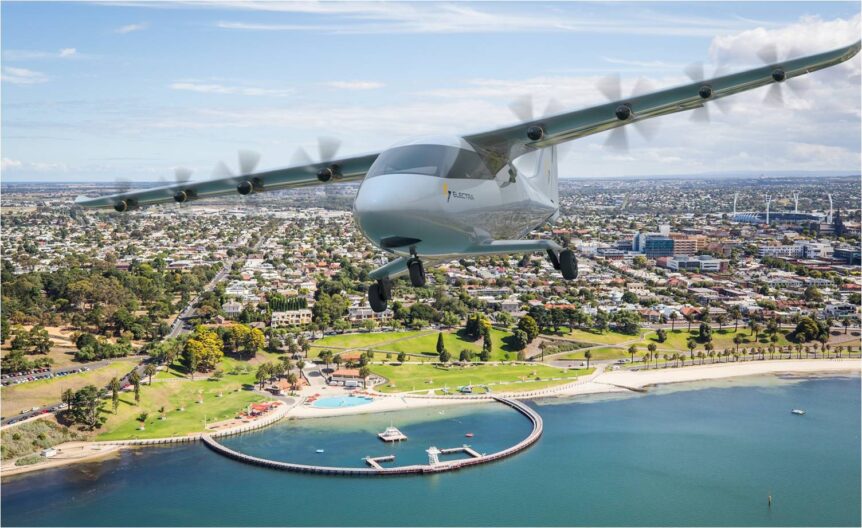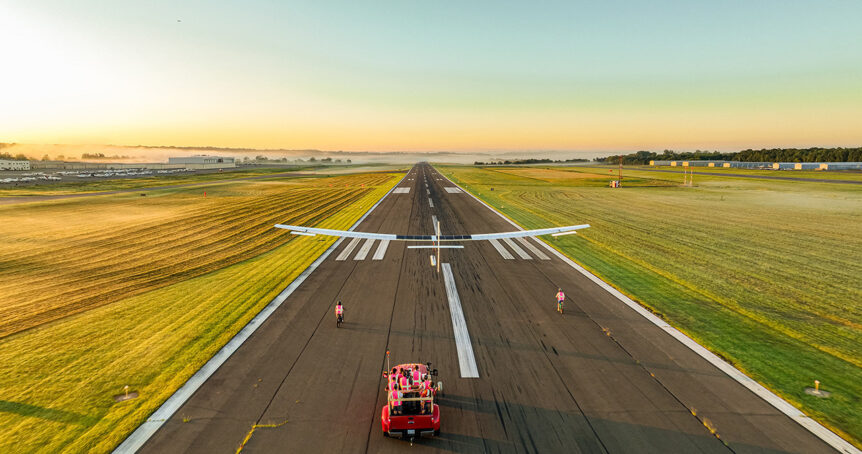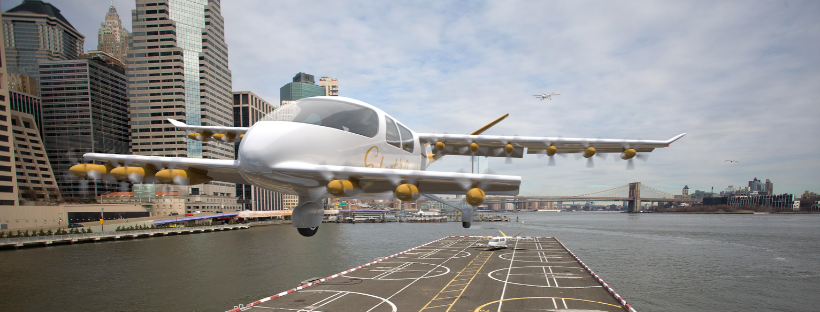The path to green flight is paved with money. In our transactional world, good ideas are sometimes rewarded with filthy lucre, even if those ideas are intended to clean up a besmirched world. Several examples of clean aviation attracting solid investments follow, along with some stumbling on unexpected obstacles. Jetson ONE For a flying machine lighter than most of its prospective pilots, the Jetson ONE has attracted a host of followers, including the host of a late-night chat show. Besides receiving 3,000 purchase requests in two months the firm has sold its initial production runs for 2022 and 2023. At $92,000 a unit, 100 craft in the first year would net $9.2 million, enough to finance the simple assembly and fabrication of the machines. A $22,000 deposit would discourage idle gawkers, although Internet views exceed 14 million. Keeping it simple allows reasonable progress to the next level. Opener Blackfly Opener claims over 36,000 flight hours in 5,000 operations for …
Electra Flies Dawn One, Solar Powered Climate Observatory
Dawn One is a solar-powered climate observatory, one of many to come and an outgrowth of a long career for John Langford, Electra Aero’s CEO, and collaborator with Professor James G. Anderson of Harvard University. A seeming callback to John Langford’s human-powered aircraft from his MIT days, Dawn One is a 90-foot span unmanned aircraft system (UAS) destined to fly at stratospheric altitudes (49.000 feet maximum) while observing data for quantitative forecasts of risks in the climate. We see its first flight from the Manassas Regional Airport in Virginia on September 9. The assistants in hot pink and orange vests are Hokies, part of Virginia Tech University, and whose name is explained in a lengthy Wikipedia entry. The “solar-battery hybrid electric research aircraft” is part of the Stratospheric Airborne Climate Observatory System (SACOS) program. The program will consist of “an ensemble of solar powered aircraft operating for months in the stratosphere,” each “ each “focused on critical climate observing missions …
Electra.Aero Acquires Airflow
Too Similar Not to Have Joined Forces The PRNewswire.com press release lauds the acquisition of Airflow.aero by Electra.aero: “Hybrid-Electric Blown-Lift eSTOL Plane Developer Electra Acquires Airflow to Create a Leader in Advanced Air Mobility.” The two companies have been developing similar multi-motor, blown-lift aircraft for the past few years. Electra’s has eight motors distributed across its wingspan, Airflow’s has 10. They both use large multi-element flaps to divert propeller thrust downwards, enabling extremely short takeoffs and landings. A Great Idea, but Better with Electric Power This is not a new concept, having been demonstrated in the 1960s by French manufacturer Breguet and American McDonnell. The 188 was a demonstrator that didn’t pick up any orders in either country. The narrator explains propeller control was a mechanical-hydraulic process and no electronics were involved. The complex system might have been a maintenance challenge airlines were unwilling to take on. Electra.aero’s hybrid-electric approach might be the answer to simpler, reliable propulsion, essential for …
Two Similar eSTOLs
Two different but very similar electric Short Take Off and Landing (eSTOL) aircraft from two different companies are making progress toward realization. Both are products of teams originally committed to electric Vertical Take Off and Landing (eVTOL) designs, so the shift to different configurations is of interest. eVTOLs are limited in range by the need to lift their entire weight on their rotors – some for the totality of the flight. eSTOLs use aerodynamics to enable longer range, and with high-lift devices, can use small fields from which to operate. Dr. Brien Seeley, head of the Sustainable Aviation Foundation, has been a long-time proponent of what he called “pocket airparks.” These neighborhood or urban sites would be contained within roughly one-block perimeters, use aircraft capable of extremely short takeoffs and landings, low noise, and quick turnarounds. Electric aircraft and their quiet operation would allow placing such airparks in more areas and could make access to air travel as common as …
eCSTOL: Longer Range Commutes on Less Power
Competition is growing in the electric Vertical Take Off and Landing market, with 407 potential builders listed in eVTOL News. Vertical flight takes power, though, and with available batteries limiting range, most such vehicles can make only short hops. Alternatives that allow speedier, longer flights, in the form of electric Conventional Short Take Off and Landing (eCSTOL) aircraft are in development. Such craft offer the benefit of requiring less power for takeoffs and climbs, being more aeronautically-based than power-based. Airflow, for instance, claims operating costs for their eCTSOL craft is one-third that of an eVTOL or helicopter. We will look at three eCSTOL craft that seem to making headway at this time. The infrastructure (in two cases below) to support their flight may already exist. Airflow Curt Epstein, writing in Future Flight, under the headline, “Infrastructure Needs for eSTOL and eVTOL Aircraft May be Closer than Imagined,” notes the “intense study” being undertaken. Speaking at the Vertical Flight Society’s Electric …
John Langford’s New Direction
John Langford has been a leading exponent of new directions in aeronautical technology. From his work as project manager with MIT’s human-powered Daedalus project to his executive leadership with Aurora Technologies, he has crafted electric, autonomous, and downright astonishing vehicles. The following video is long, but insightful and exciting. We see Langford in several early scenes. Having seen Daedalus conquer the Sea of Crete like the mythical first airman, Langford spread his reach into ever more technologically complex problems. His resume is deceptively short, since he’s held only two jobs since leaving college. His LinkedIn bio is brief, but telling. “John Langford is the founder and CEO of Electra.aero, a startup developing hybrid electric aircraft for regional mobility. He founded Aurora Flight Sciences in 1989 and served as Chairman and CEO through 2019. He is a member of the National Academy of Engineering and serves as President of the American Institute of Aeronautics and Astronautics (AIAA).” The video gives a …
Aurora’s Odysseus – Large Enough for Its Mythic Name
Named for a mythical hero like its evolutionary predecessors, Aurora Flight Science’s Odysseus is a huge, but ephemeral thing. A wingspan larger than the largest 747’s and a weight no greater than a Smart Car’s (around 1,500 pounds) means this airplane will be slow and frail. A carbon fiber tube structure covered by lightweight Tedlar™ resembles the construction of Solar Impulse, but without the bulk of carrying a pilot. Since its antecedent was the world record holding distance champion in human-powered aircraft, the manner of flight is no surprise. Its intended altitude is. Odysseus takes it to the stratosphere. It’s the latest revelation in a thirty-year exploration of low-powered, extreme-endurance aircraft. Before he founded Aurora, John Langford led a group of Massachusetts Institute of Technology (MIT) students in a four-year program that developed three human-powered craft – the Daedalus series. In its final iteration, Daedalus set the still-extant world record for human-powered flight distance, 72 miles emulating the flight of its …
EAS IX: Aurora Flight Science Set Records without Pilots
John Langford, CEO of Aurora Flight Sciences, has been demonstrating autonomous aircraft for years – a fact he has shared with Electric Aircraft Symposium audiences several times. This year he gave a brief history of Aurora, starting with the Sunlight Eagle, an adaptation of the Michelob Light Eagle, a human-powered aircraft that preceded the most successful long-distance flight by an HPA – the Daedalus with a 76-mile trip over the Mediterranean. The 2009 craft was originally powered with bicycle-like pedals and still holds four world records for human-powered flight. For its two test flights at Las Cruces International Airport, the pedals were replaced with solar panels, an electric motor, a high-performance battery, and a flight control system. Even with all the add-ons, the 114-foot span airplane weighed a mere 173 pounds. This ability to build light, capable airframes coupled with intelligent remote and autonomous controls has led to multi-day endurance craft well suited to ISR (Intelligence, surveillance and reconnaissance) missions. …
Aviation Week Recognizes CAFE Foundation’s Efforts
As noted in this blog. Dr. Brien Seeley, President of the CAFE Foundation, has been actively promoting the idea of a short to intermediate range Sky Taxi, a two-seat aerial vehicle that would carry its passengers safely from 420-foot runway “pocket airports” to other such runways at other urban and suburban settings, or even pockets situated within major airports. The safety and utility promised by these electrically-powered aircraft would provide convenient, inexpensive trips for commuters who would enjoy TSA-free travel up to 500 miles at point-to-point speeds exceeding even private LearJets. Aviation Week recently noted efforts by John Langford, CEO of UAV specialist Aurora Flight Sciences, to achieve part of Dr. Seeley’s far-reaching goals with today’s technology. As Graham Warwick reports in the magazine, “Five years after DayJet’s on-demand air service using very light jets ceased operations, the dream of air taxis remains alive. But industry is looking at unmanned aircraft technology as a way to reduce or eliminate the …







